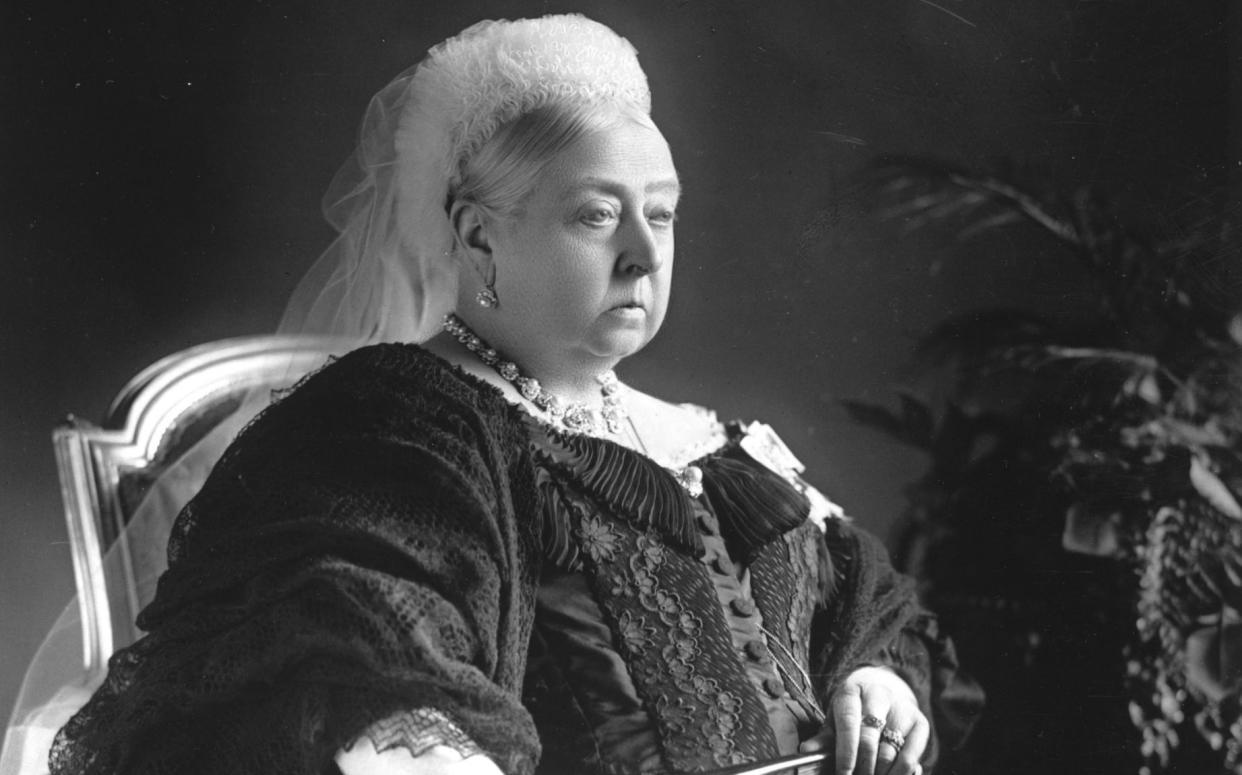We no longer want to confront the reality of death

Queen Victoria was arguably the first emo – pasty-faced, reluctant to go outside and dressed exclusively in funereal weeds. Partly inspired by her 40-years of performative widowhood, Victorian society devised an elaborate set of grieving rituals. Widows were expected to spend at least a year dressed completely in black, overlaid with stiff, scratchy crepe. After a year they could switch to “half-mourning” – still black, offset with touches of white and purple – and minimal jewellery, though with a macabre touch. This was often woven from the hair of the dead.
Weirdest of all was the popular custom of “memento mori” photography. Families would pose with the bodies of their dead relatives, propped up or with their eyes wedged open as if still alive. Lengthy daguerreotype exposure times regularly rendered the deceased in sharper focus than the slightly-blurred living, due to their lack of movement. This seems deeply bizarre to modern minds, but photography was expensive and this could be a parent’s only opportunity to capture a group shot of their entire family.
The Victorians were steeped in death; an ever-present reality for all ages. Funerals were an extravagant business for everyone but the poorest, designed to demonstrate respectability and abundant grief. As recently as three generations ago, straw was spread in the street to muffle the sounds of hooves and carriages. Even during my mother’s lifetime, curtains in rural villages were drawn and neighbours would make a ceremonial call to pay their respects to the dead.
The British way of death, however, has altered radically. According to a survey by the religious think tank Theos, less than half of the population would now choose to have any kind of funeral. Financial pressures and dwindling religious belief are reportedly leading growing numbers of us to “dispense with funeral rites altogether”.
Many would consider this a welcome break from a morbid ceremony that enriches only the undertakers. “Celebrations of life” have become fashionable, sometimes with the guests bidden to wear bright colours and dispense with the awkward truth that someone you love very much has popped their clogs. Even the word “death” is superseded by comforting euphemism. I particularly loathe “passed away” or just “passed”, which suggests the deceased has either broken wind, or ejected a gallstone.
“Life celebrations” are a function of creeping secularism. They also reflect a growing remoteness from the process of dying; which increasingly happens out of sight, in sanitised settings like hospitals or care homes. Many of us reach adulthood without ever seeing a dead body. My first encounter with a corpse turned into surreal farce when my grandad died suddenly at home, sitting peacefully in his chair, and we beat the undertakers there. One of us went to hand him a cup of tea, forgetting he was dead. Imagine a real-life remake of ‘The Kipper and the Corpse’ from Fawlty Towers.
Meanwhile, lockdown robbed society of every ritual associated with death; comforting the dying, attending funerals, sympathising with the bereaved. Would a more religious society even have tolerated such restrictions? That all religions have deeply-rooted customs around death suggests they are an innate part of the human experience; pretending otherwise won’t do anyone any favours.
Formal funerals, whether Christian or not, have always been an important part of the grieving and mourning process; helping people make sense of death. They arguably have more to do with those left behind than the deceased themselves. Of course there will be time, in the pub or at the wake afterwards, to remember happy moments or celebrate a person’s achievements, but turning this into the sole purpose of funerals makes it hard to speak about the painful reality of death.
Sometimes funerals aren’t just a question of “saying goodbye” to someone who’s had a great life. What about when it’s a child or because of a cruel illness, or after a life that’s been miserable or wasted? What’s to celebrate then? The cheery or non-existent funeral robs us of the necessary grammar of grief, denying us permission to mourn, regret or be angry, which are important aspects of death, too.
Stephen Beresford’s play, the Southbury Child, brilliantly portrays the tensions inherent in contemporary cultures of death. A vicar is asked to conduct a child’s funeral and insists on solemnity. The child’s family wants to decorate the church with Disney balloons, which, to him, denotes showbiz – and “death is death”. This stubborn stand against modernity costs him everything, and is hard to understand. Yet it is extraordinarily moving when we finally reach the service and hear the immortal words from the Book of Common Prayer burial service: “I am the resurrection and the life”. The vicar’s insistence on tried and tested methods of dealing with grief and the great imponderables of existence begins to make sense.
The Victorians may have been death-obsessed – often creepily or mawkishly so – but the enforced cheeriness of secular mortality can be equally strange; the vapidity, the innate refusal it implies to face up to reality. We are turning away from traditional ways of death, but what replaces them may not be an improvement.

